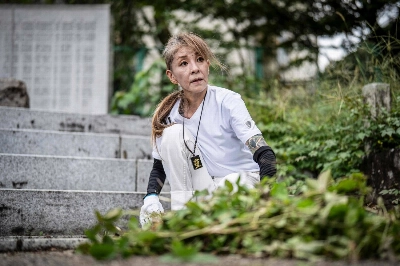Of all the Japanese arts, rakugo traditional comedy is one of the most impenetrable for foreigners. The premise is simple: kimono-clad practitioners tell old funny stories on stage that culminate in a punch line called the ochi, with only a fan and handkerchief as props.
In the hands of an expert hanashika (storyteller) raconteur, these can become anything from a sweet potato to a samurai sword, conjuring Edo times (1600-1868) from which most narratives descend. Changes in gesture and voice to depict characters are important, but language is crucial. Unlike plays at the Kabukiza, there is no English guidance for the stories, and if your Japanese isn't up to grasping Edo puns, you won't be in on the joke.
It's no surprise that few non-Japanese patronize Tokyo's four yose (rakugo theaters); most Japanese find the art mystifying too. That is a shame because rakugo is unique; it's an interactive aural tradition fully alive to its audience and contemporary reality — not subsidized theater frozen in time. Happily, when I stumbled upon the Suehirotei yose in Shinjuku recently, its friendly manager offered me a copy of a book that helps explain the genre.

















With your current subscription plan you can comment on stories. However, before writing your first comment, please create a display name in the Profile section of your subscriber account page.